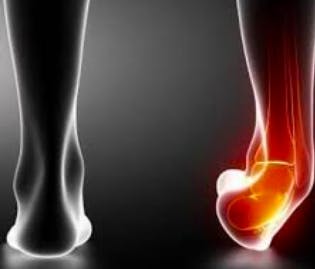INVIVOX: Initially a shoulder specialist, what led you to become a specialist in minimally invasive foot techniques?
Dr Stéphane GUILLO: When I joined the clinic (http://www.cliniquedusport-bx.fr/FR), the interventions were mainly oriented around the knee and the shoulder. I could see that sport surgeons paid very little attention to the ankle. Patients were therefore not taken care of by surgeons; and France was not a unique case. So much so that even in learned societies, the shoulder and the knee predominated. I therefore decided to take care of patients with ankle problems. From there, I realised that there were many arthroscopic techniques for the shoulder and the knee that had never been applied to the ankle. The history of arthroscopy, as for all joints, evolved in three phases: the first phase being where we look, the second, where we resect, and the third, where we manage to repair. Today, in ankle arthroscopy, we are in this third phase.
"We are the first generation of arthroscopic ankle repair surgeons."
INVIVOX: Is arthroscopy of the ankle, a minimally invasive surgery, in full expansion?
Dr S. Guillo: Yes, it is obvious. This is the future in sports surgery. We are living the same revolution that we experienced in the 80s with the knee. We are starting to have reliable procedures that we can do under arthroscopy. To give you an idea, there are approximately 12,000 sprains in the United States and 6,000 in France, every day. One in five patients will progress to chronic ankle instability. Potentially, therefore, 20% of patients are suffering from chronic instability, or approximately 430,000 patients per year. It is a much higher number than the patients who suffer from anterior cruciate ligament injury. This procedure will prevent them from suffering from osteoarthritis in the long term. The more anatomical the ligament-plasty, the better the long-term result.
INVIVOX: Where are the techniques at right now?
Dr S. Guillo: A huge number of techniques in repair and reconstruction of the ligaments - whether anatomical or non-anatomical - has already been described (around 200). We now know that non-anatomical repairs do not work very well in the long run. Today there are still indications for repair or reconstruction when the ligaments are too damaged. The problem is that many patients with ankle instability are without follow-up and a fortiori without operation. The publication of Dr James Nunley shows that one in five ankle prostheses is due to an ankle sprain (https://journals.sagepub.com/doi/abs/10.3113/FAI.2009.0579). It is therefore necessary to manage to treat patients before reaching the stage of prosthesis installation by offering them a conservative surgical treatment to preserve their ankle before its destruction.
INVIVOX: What are the strengths of arthroscopy in the management of chronic ankle instability?
Dr S. Guillo: Firstly, arthroscopy helps to reduce complications (which is also proven in the case of the shoulder and the knee). Each time we put an arthroscope into a joint, we experience fewer complications. While this has not yet been proven in the ankle, we do know, however, that open ankle surgery is three times more dangerous than in a shoulder or knee surgery. We therefore have three times the risk of complications when we operate on an ankle than when we operate on a shoulder or knee. It is therefore very likely that for the ankle more than anywhere else, we need to resort to arthroscopy. Secondly, it is possible that the graft placement during a reconstruction is better under arthroscopy than in open surgery - because it is closer to the anatomy.
INVIVOX: Why do severe sprains develop into chronic sprains? Why not operate immediately using these minimally invasive techniques?
Dr S. Guillo: One in five sprains becomes chronic; which happens when the ligament does not heal. We therefore do not operate immediately (except in very rare cases with high performance athletes for example) because we give the ligament a chance to heal.
INVIVOX: Why is there a great disparity in treatments for the lateral ankle ligament?
Dr. S. Guillo: There has been less disparity since the development of arthroscopy because we are starting to have reliable techniques. The "gold standard" is the Brostrom Gould, which we will teach in this training, which is based on the consensus and recommendations that have been described regarding ankle sprain.
INVIVOX: Can you describe this new “all inside” concept of anatomical reconstruction of the ankle lateral ligament using the Brostrom Gould technique?
Dr S. Guillo: Brostrom Gould is an open technique involving ligament strengthening. The “all inside” technique means that everything is done under arthroscopy. For my part, I am the initiator of the "All inside Gould", meaning that no one had previously described the dissection of the retinaculum under endoscopy. The advantage of this technique, compared to others also under arthroscopy, is to get as close as possible to what has been described in open surgery. That is to say, the other arthroscopic techniques make compromises that we do not make in the "All inside Gould" technique.
INVIVOX: What are its advantages for the surgeon and for the patient?
Dr S. Guillo: For the surgeon, it is pretty hard: you must train; this adds technicality. For the patient, surgery is done on an outpatient basis. We are demonstrating that there is no loss of mobility after surgery. There are also fewer complications than with open surgery, with the resumption of sports activities in similar time frames.
INVIVOX: What is the structure of the practical sessions?
Dr S. Guillo: When we are in the anatomy laboratory, I give all the tools necessary on a daily basis, so that participants can manage to repair or reconstruct the ligaments under arthroscopy. To carry out the techniques that we are going to learn, participants who already have a good background in shoulder and knee arthroscopy will undeniably have an advantage over those who do not.We have at least five hours of cadaver practice. The success of interventions is essentially based on practical training with the imperative to recreate the operative environment very accurately. Participants must be able to reproduce the intervention at the end of the course. In principle, the surgeon who is capable of doing cap sutures and arthroscopic crossovers will be able to reproduce the procedure upon returning home. However, if the surgeon is not already very experienced in arthroscopy, we cannot be sure that he or she will reach this goal.
INVIVOX: Surgery in general, and orthopaedics in particular, is full of "tips and tricks", can you share one with us?
Dr S. Guillo: At the start of the procedure, you create a portal in dorsiflexion position first.
INVIVOX: What are the benefits for participants?
Dr S. Guillo: They will be able to have a good reasoning on the indications, make a lesion assessment by arthroscopy and adapt the surgical procedures to the lesions. The goal is that at the end of this course, participants have in hand all the possible alternatives to make the right decisions and that they know how to perfectly reproduce the technique.

